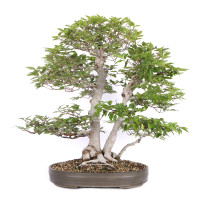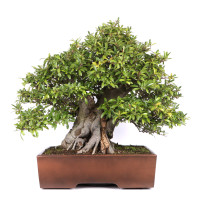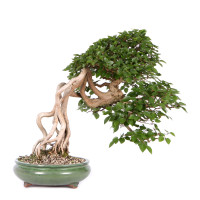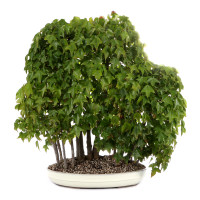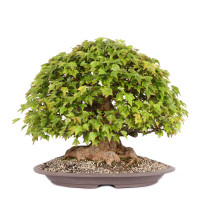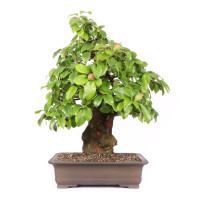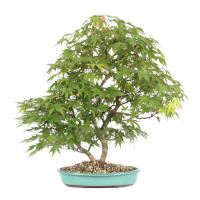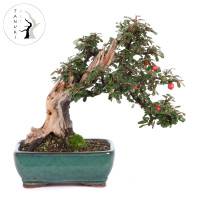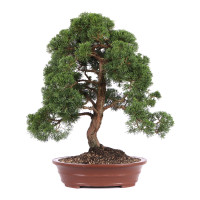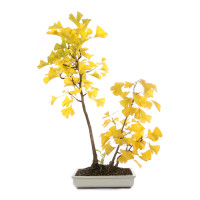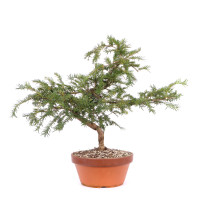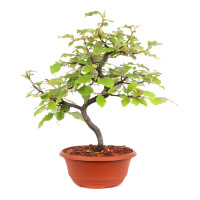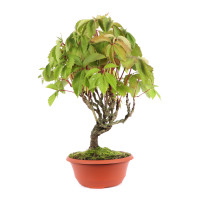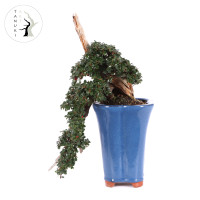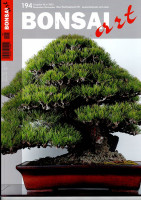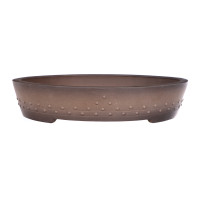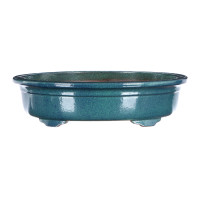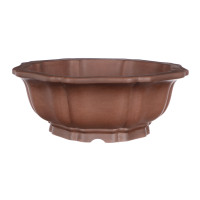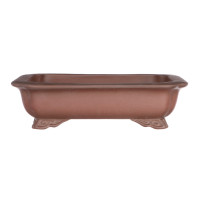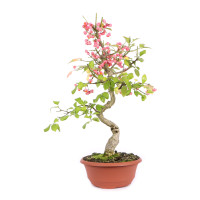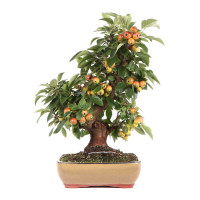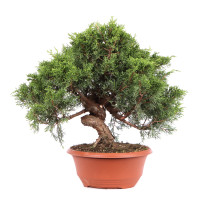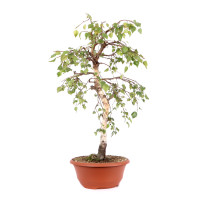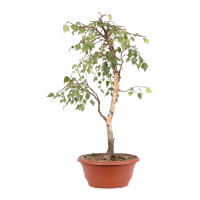- Order number: 1883-KT-25-3452
- Addtion: Tanuki
- Height: 28 cm (incl. pot)
- Foliage: evergreen
- Bonsai Pot: ceramic pot
- Year: 2020
- Characteristics: with fruits
- Origin: Germany
Taxus cuspidata 'Lescow' - Japanese Dwarf Yew 'Lescow'
General:
The Japanese yew is native to the high altitudes on various islands in Japan. It grows rather slowly here as a shrub and reaches a height of about 3 meters. The needles are evergreen, brownish in autumn and shorter, and more compact than those of the common yew, which is more common in Europe. The bark is gray-brown and later partially separates into scales. Female plants have conspicuous red fruits. Except for this red pulp, all parts of the plant are poisonous! Yew is very hardy and tolerant of soil and weather conditions.
Care as a bonsai:
Due to its robustness, strong budding ability (even from the old wood) and fine foliage, the yew offers many possibilities for bonsai design. However, you should wire it in time, when the branches are still young. Later they become very hard and inflexible. Yew can grow both in the shade and in the sun. The only important thing is appropriate watering, avoiding waterlogging at all costs! During the growing season, the long shoots are shortened by plucking. As with almost all conifers, late summer/fall is the best time for root pruning and repotting. Be sure to use a respirator when milling the wood due to toxicity!
Special features of the variety:
The cultivar 'Lescow' is a dwarf form of the Japanese yew. It grows slower, stockier and has much shorter needles than the species. Accordingly, it is very suitable for bonsai culture and here especially for small bonsai formats.
About Tanuki:
A special technique for quickly obtaining expressive and very old-looking bonsai is to "marry" a plant to a dead piece of wood. This usually involves joining long grown plant material to a nicely shaped piece of wood. The plant and the wood are sometimes intricately worked and over time become fused into a single unit. The artistic connection often resembles very old specimens collected in nature (Yamadori) and often looks deceptively real.
Bonsai created by this technique are called "Tanuki" in Japan. The name "Tanuki" also stands for the native "tanuki", which appears in mythology as a mythical creature. In the legends he appears as a cunning quick-change artist, who likes to lead people behind the light, but through these abilities often emerges as the hero of a story.
About the artist:
All "Tanuki Art" - bonsai were designed by the artist Mulyadi. Mr. Mulyadi has been professionally involved in the design of bonsai for many years. In his home country Indonesia he creates extraordinary bonsai out of different plant material. In addition to the implementation of classical forms of design, he has developed his own style and is always looking for creative solutions. The application of the Tanuki technique is his absolute passion and he has developed special methods to achieve unique results in terms of craftsmanship and artistry. "Tanuki Art" - Bonsai are available exclusively in the Bonsaischule Enger.



















